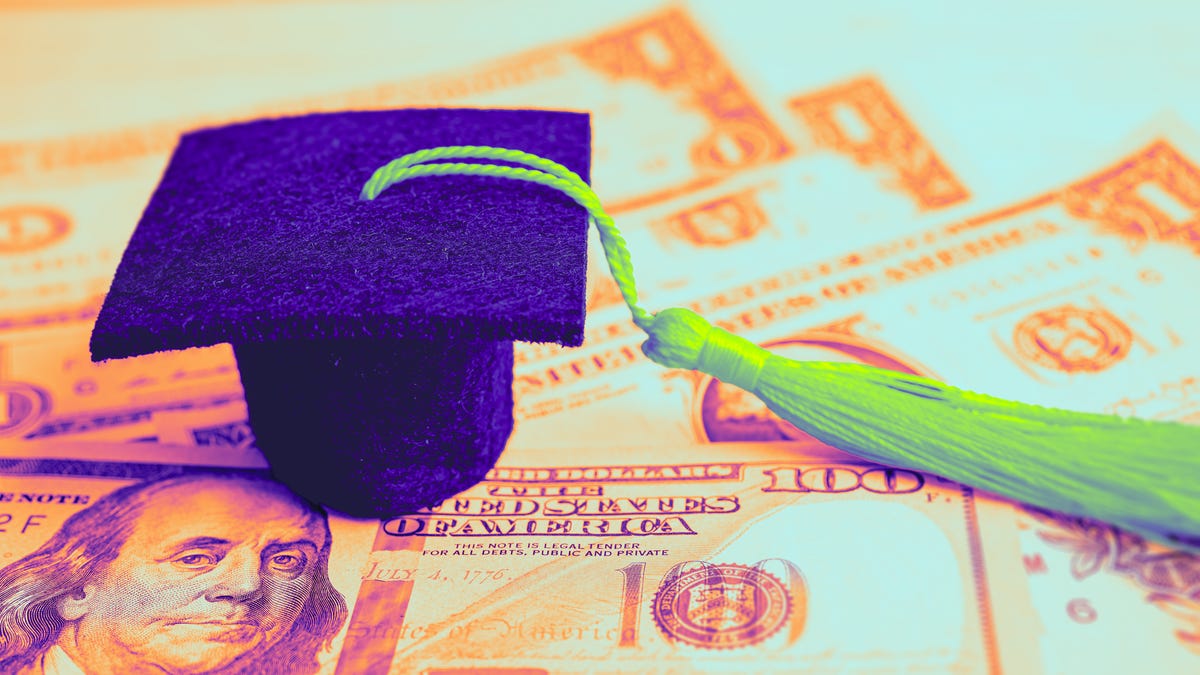Student loan forgiveness options have dwindled considerably during President Donald Trump’s second administration, but the Department of Education says forgiveness through Income-Based Repayment isn’t going away. However, it is on pause.
The Federal Student Aid website says IBR forgiveness is on hold while the Education Department retools its system to recalculate eligible payments. “IBR forgiveness will resume once those updates are completed,” said an FAQ section updated July 9.
The key question is how the Education Department counts payments made under the Saving on a Valuable Education repayment plan, which was struck down by the courts earlier this year.
Borrowers on the IBR can have the payments they made on other income-driven repayment plans (including SAVE, PAYE and ICR) count toward their IBR forgiveness. But one of SAVE’s features allowed borrowers to count months in certain types of forbearance when they didn’t make payments, according to student loan expert Mark Kantrowitz.
“The decision of the 8th Circuit Court of Appeals blocks these additional deferments and forbearances from counting toward forgiveness,” he said in an email. “So the US Department of Education will need to make changes to the qualifying payment counts.”
IBR is an income-driven student loan repayment plan that adjusts monthly payments based on borrowers’ income. Eligible student loan borrowers can receive forgiveness after 20 or 25 years’ worth of payments, depending on when they took out their loan. It’s currently the only repayment plan available that offers a path to forgiveness to existing borrowers.
We’ll explain what could happen with IBR, and what you should do if you’re waiting for student loan forgiveness.
SAVE Student Loan Borrowers: You Don’t Have to Move to IBR by Aug. 1, but You May Want to: Here’s How to Decide
Is student loan forgiveness going away?
Multiple paths to student loan forgiveness have disappeared in the past year. ICR, PAYE and SAVE plans are no longer eligible for forgiveness directly, following the court ruling in February that Congress exceeded its authority by approving them. Since IBR was created under a different rule, it wasn’t affected by the court’s ruling.
Forgiveness through IBR should be safe for now. But it’s understandable that borrowers — deciphering confusing and misleading information as they wait for forgiveness — may be skeptical of the Education Department’s reassurances that IBR forgiveness is coming back.
After February’s court decision, the application for income-driven repayment plans was removed from the federal student loan site, causing concern among borrowers. But it was made available again a month later with revisions. This could, in theory, be a similar scenario, where the IBR forgiveness will resume at a later date.
When will IBR forgiveness come back?
Though the Education Department calls it “temporary,” there’s no indication how long the IBR pause will last. With a backlog of 1.5 million applications for repayment plans and huge swaths of the Department of Education staff wiped out, it’s unclear how long it could take to resolve the payment recalculation.
The Washington Post reported that several student loan servicers have said the Education Department hasn’t asked them to process loan forgiveness for any borrowers since mid-January. “This not only affects the loan servicers, but also the US Department of Education, since final approval of loan forgiveness is handled in-house,” Kantrowitz said.
The Department of Education didn’t immediately respond to a request for comment.
Are there other options for forgiveness besides IBR?
Besides IBR, existing borrowers will have another option next year under the new Republican-backed law passed earlier this month: the Repayment Assistance Plan.
The new Repayment Assistance Plan could offer slightly lower monthly payments for some borrowers, but the plan calls for 30 years of qualifying payments before loans are forgiven, compared with the 20 to 25 years under the current IBR. So you’ll end up paying more in interest over time.
Anyone who takes out student loans after July 2026 will have just two repayment options: RAP and the standard repayment plan.
Should I still apply for IBR if I’m a SAVE borrower?
Millions of borrowers enrolled in SAVE will start accruing interest on their loans again starting Aug. 1. However, payments remain on hold while your loans are in a general forbearance, which could last until mid-2026. You aren’t required to switch plans until then, although interest will pile up during that time.
However, if you decide to switch, you can compare other income-driven repayment plan options using the Federal Student Aid loan simulator. You can apply to switch to an IDR on the FSA website to restart payments that count toward forgiveness.
If you do apply for a new plan, expect the application to take several months to process due to the backlog, Kantrowitz said. The Department has been encouraging SAVE borrowers to switch to IBR, which could mean an even higher volume of applicants as the Aug. 1 deadline approaches.
What should I do if I’m enrolled in an IBR?
If you’re enrolled in an IBR and near or past the payment threshold to be eligible for loan forgiveness, Kantrowitz advises you to continue making payments until you receive notification that your loans have been forgiven, which should happen automatically.
“Any excess payments will be refunded,” he said. “They could switch into a general forbearance, but there’s a risk that they’ve counted their qualifying payments incorrectly. It is better to just continue making payments.”
Read the full article here


